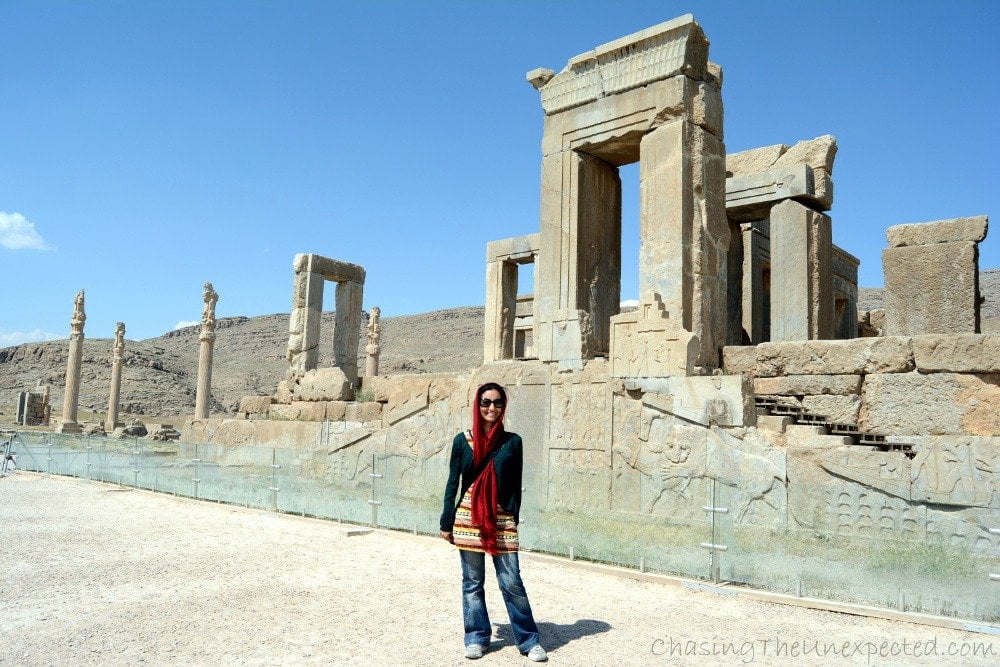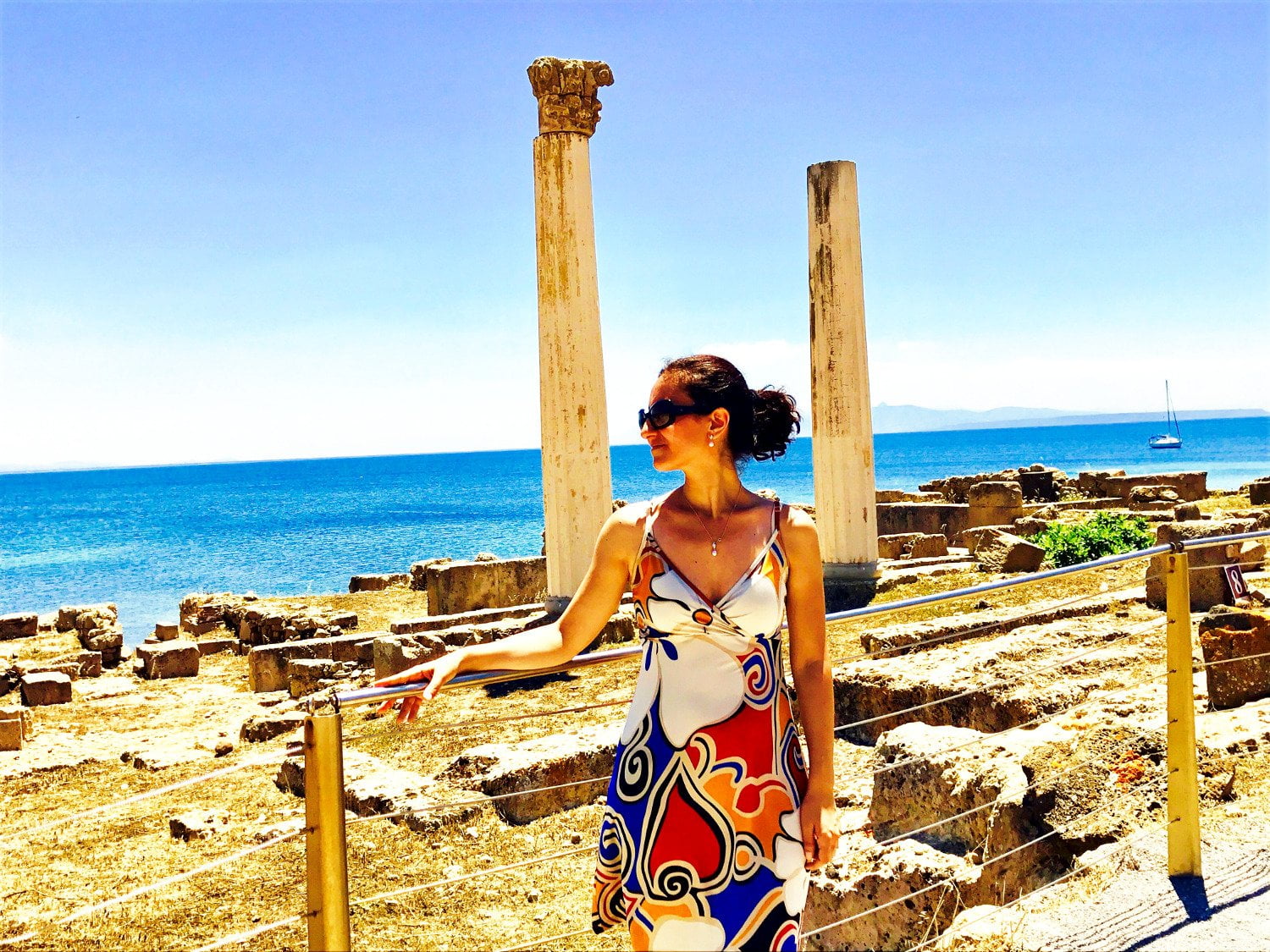The more I travel to Iran, the more friends and readers ask me questions about the Islamic Republic and how to behave in case they want to visit too. Alongside how to get an Iranian visa, among the most popular issues they raise, Iran dress code is always included in a way or another.
If you travel to different Iran regions, you will notice a sensible difference in traditions, including the way men and women dress. Tehran is pretty relaxed, while in conservative cities like Kashan or Qom you might feel more comfortable wearing a more covering outfit.
READ MORE: Travelling to Iran? Here are our best tips for planning a perfect Iran trip with no hassles.
What to Wear in Iran: Iran Dress Code For Tourists

Who wants to visit Iran is often worried about being unable to abide by the guidelines of the Islamic Republic in what concerns clothing style. So here are some of my tips and tricks on how to properly follow Iran dress code.
First of all, to non-Muslim visitors, the main news is the headscarf which, according to the Islamic dress code, is a symbol of modesty for a Muslim woman. Often referred to with the generic term of hijab, the headscarf is actually a part of it. Hijab, in fact, is a broader term that indicates the whole dress code you need to follow in a Muslim country that requires it. So not only the headscarf but also modest clothes in general.
Foreigners are asked to follow the Iran dress code, but no need to panic about it. Here are the rules and some tips to dress hijabi, so that you will be aware of what to wear in Iran in order to be respectful of the local law but not uncomfortable.
READ MORE: Check out the best places to visit in Iran in a 10-day classic tour for first-time visitors.
In Iran Wear a Headscarf
One of the first rules of the Iran dress code for women is wearing a headscarf. Even though it can be loose and not too strict, foreigners and tourists are also required to abide by Islamic and Iranian law. If you have heard horror stories involving Iranian police stopping tourists and asking them to cover every single hair, after four trips to Iran I can say that’s not really the case.
The headscarf can be a shawl or a scarf, and the styles are literally countless, so something pretty easy to pack for Iran. From hiding the hair completely to leaving some out to be seen, covering a high hairstyle that reminds of an odalisque, a small shawl knotted under the chin, a long scarf loosely wrapped around the neck, a shawl wrapped around the head, and so on and so forth.
You can choose what type of hijab suits you best, be it a headscarf for a more serious look or with brighter colors perfect for spring. Many Iranian women wear also a chador, a full-body-length piece of fabric open in the front and usually black. Obviously, tourists are not asked to wear it unless they are entering the shrines, which are the funerary mausoleums of the main Imams, such as the ones in Qom, Shiraz, and Mashhad.
Foreigners will also hardly be able to keep up with the latest hijab fashion, but don’t get despondent, you can always learn. After only four times and four years I’ve been going to Iran, I finally gave up and bought myself one of those huge hair claw clips to keep the headscarf hanging and sort of stuck. I have to say that it worked quite well and I even started forgetting to check if the veil was in place.
Cover Up to the Thighs
Alongside the different hijab styles, Iran women’s dress code involves some more rules and tricks. Women are expected to wear a manteau that covers up to the thighs with trousers underneath.
Even though you are wearing trousers, you are required to cover up to your thighs. Be it summer or winter, no difference. Iran’s dress code for women always requires you to wear a longer tunic or shirt.
Winter is hardly an issue especially in cold cities like Tehran as you will definitely want to wear a coat. In spring and summer, you might prefer some lighter tunic, still the same length.
Wear Leggings or Long Trousers

Forget mini skirts, skirts up to the knees, or, even worse, shorts. You always need to wear long trousers up to your ankles. They don’t need to be loose, it can be leggings, tight jeans, and whatever type of pants you are more comfortable with.
Fabric and color don’t really matter, as long as your legs are covered. Also for the trousers, in winter is always easier because the cold temperatures will make you want to dress more. Summer in Iran is pretty hot, so it might be harder. But if you are wearing loose linen trousers or cotton leggings, you will be fine.
In all honesty, you could also wear a long skirt as long as your ankles are covered. but not sure how comfortable this will be when sightseeing and going up and down staircases and landmarks. Make sure not to wear skirts up to the knee or longer with stockings, even if covering, as it’s not allowed.
No Short Sleeves for Women in Iran
Here too, be it summer or winter, women are not allowed to wear short-sleeve or sleeveless t-shirts. Sleeves need to be long or 3/4, also in summer.
Something like this or this with a pair of leggings underneath will be just fine.
So what to wear in Iran in summer?
A typical outfit that to wear in Iran in summer can be light trousers or leggings, a cotton or linen 3/4 sleeve tunic, and a light fabric headscarf.
Shoes-wise, that’s not a problem. You can wear open sandals or summer runners. You will see many Iranian women wearing sandals. Especially in Tehran or Shiraz, some of the most liberal cities in Iran. Areas like Khuzestan, Yazd, Kashan are more conservative, so probably you will still see mainly closed shoes and more covering also in summer.
Choose your colours
Finally, spring and summer are all about colors, from bright headscarves to colorful manteau to flashy ballerina shoes. Autumn and winter are a bit more subdued color-wise. No law prevents you from wearing bright colors in winter though, as long as you follow the Iran dress code you are good to go.
You will see darker colors in Iranian women’s clothes especially during Moharram, the period of mourning for the death of Imam Hussain celebrated by Shia Muslims in Karbala, Iraq, with Arbaeen being on the 40th day of Ashura.
Hijab For Men in Iran
Did you think only women had to dress modestly in Iran? Not so much. Men are allowed to wear short-sleeve t-shirts in summer, but not sleeveless. As a male foreign tourist in Iran, you can wear either short-sleeve t-shirts or blouses.
No shorts for men either, they are always required to wear long trousers. For men, too, fabric and colors don’t matter as long as they follow the Islamic dress code. Men too can wear open sandals, maybe not flip flops but sandals are fine.
READ MORE: Interested in knowing more about Iran? Click here to read my list of top 10 books on Iran and get inspired to plan your trip!
SAVE IT FOR LATER?




I love posts like these. Useful information for what to wear/what not to wear to be culturally respectful. Meanwhile you some some of the negative rumors and stereotypes along the way. Thanks :) I’ve been considering Iran as a country to visit in my lifetime. This is helpful information for when I do!
Nice article. Especially good for foreign women travelers. Foreign women travelers? Yes, look here: http://theotheriran.com/tag/foreigners-in-iran/ .This is a selection of travel reports of People from almost all continents, women and men who traveled to Iran, and write about their experiences, give tips and so on ….
I am a 35 year old Mexican immigrant living in Los Angeles for the last 25 years. As an immigrant, I respect and value every world culture. Therefore, I would love to visit Iran, as I am absolutely in love with Persian history and modern day Iran.
Thank you for writing and exposing us to everything in beautiful and enchanting Iran.
Sincerely,
Alex
Thank you for your kind words dear Alejandra, for sure everywhere we travel, the first and foremost thing to do is to respect the hosting culture. Do visit Iran, I’m sure you will love it.